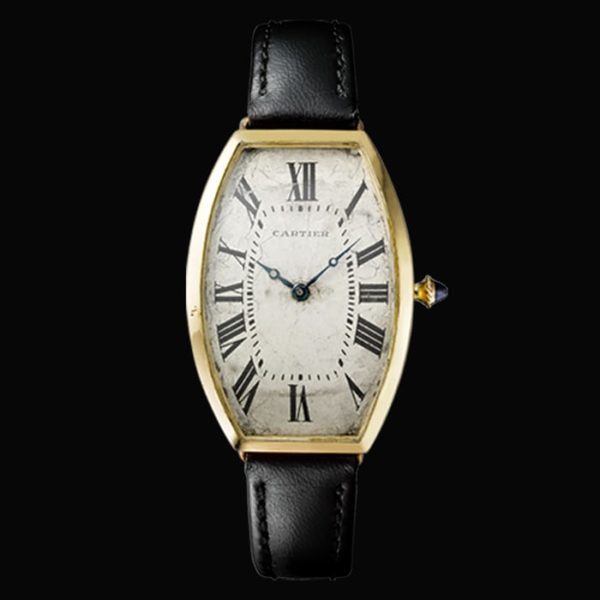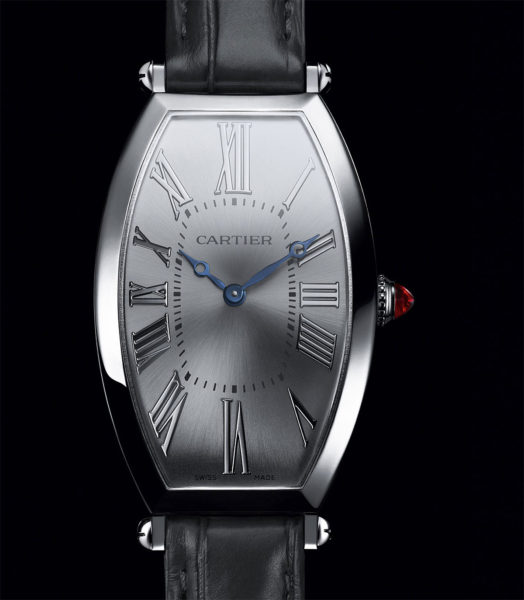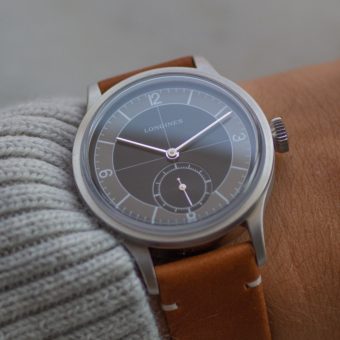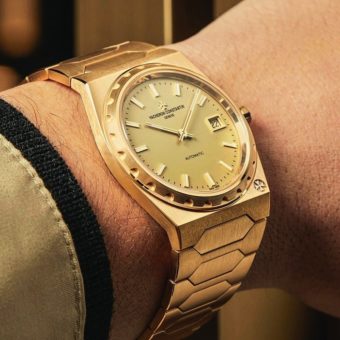As the new year begins and the new Roaring ‘20s kicks off in style, this week we’ll take a look at an early 20th-Century-inspired watch model that was surely found on the wrists of many gentleman dandies during that era of 100 years ago: the Cartier Tonneau.

In 2019, Cartier released an updated Tonneau collection at SIHH to much media fanfare, revitalizing the more-than-century-old collection. The first Tonneau watch was developed in 1906, making it one of the earliest wristwatches available for men, released two years after the initial development of the now-famous Cartier Santos, which is often credited as being the first official men’s wristwatch. The collection is best known for its “tonneau” case (the French word tonneau means “barrel” in English), which is a distinctive shape the watch helped pioneer and which is particularly popular among lovers of luxury watches today.
The collection is sometimes confused with the similarly named Tortue collection (released in 1912) which also uses a curvy design and similar dial features but is differentiated by its shorter and thicker case, which many describe as being somewhat less elegant and distinguished as compared to the longer, thinner Tonneau.

Within the updated collection are two skeletonized dual-time models, available in platinum and rose gold, and two time-only models available in the same metals, though it will be the time-only editions we’ll be focusing on today. Each of the models use a 46.3-mm x 23.0-mm case in the collection’s signature shape, with a thickness of 7.2 mm. On its right side is a sapphire-set crown produced in Cartier’s signature style, though the platinum model is differentiated by its use of a red gem rather than the traditional blue cabochon. At the top and bottom of the case are vis armurier (or “gunsmith”-style) tube screws securing the bracelet to the lugs.
The dial of the watch uses a sunray “flinqué” style matching the curved oblong case, with applied Roman numerals, an inner printed black minute ring, and a Cartier logo towards the top of the face. Passing over the dial are two vintage-style hands produced in blue steel, with an extra hand for the seconds absent to further add to the simplicity of the watch’s aesthetic. Inside the Tonneau is the manually-wound Caliber 1917 MC, capable of a 38-hour power reserve.

The updated Tonneau collection is certainly catering to a modern gentlemen who appreciates vintage styling, and as such features a nice mix of contemporarily distinct elements and historical references. As for the similarities to the original, you’ll notice the barrel-shaped case and sapphire-tipped crown, as well as its Roman numerals for the hours, black minute ring, logo, and stylized hands. The modern model plays into the history of the 100-plus-year-old design, and this can be observed from first view.
With the similarities noted, the brand has clearly opted in this release to update the collection to modern Cartier standards of luxury. This includes boosting the size of the case and its overall proportions — most noticeably in the hands and Roman hour markers— and adding new details like the modern Cartier cabochon crown style, and the vis armurier accented lugs. There is, overal,l an increased sense of refinement in the new models, especially noticeable in the sunray dial and applied numerals, but also in the expert polished and brushed finishing and unique use of screws in the watch’s design. With all of these modern upgrades also comes an increased price tag, with the platinum model being marketed at $26,200 and the rose-gold edition priced at $22,400, both somewhat higher than other time-only Cartier models produced in precious metals.

When the Tonneau collection’s release date was first announced at the end of 2018, the updated series was to be known as the Privé Tonneau, with the “Privé” designation to be the start of Cartier’s official historically inspired collection. Since this point, the Privé label has been conspicuously missing from the brand’s publicly available sales or marketing materials, with this newest watch being named simply the “Tonneau.” Nonetheless, the new watch signifies Cartier’s continued commitment to producing historically inspired models, and further accentuates its ability to produce refined watches that draw on some of the very earliest wristwatch designs. Whether or not the Privé designation is picked back up by the brand is to be determined, but that Cartier will likely continue producing watches inspired by its rich, long history is almost guaranteed.
For the most recent article in the “Vintage Eye” series, in which we discuss the Timex Q Timex and the historical watch that inspired it, click here.
Caleb Anderson is a freelance writer with a primary focus on vintage watches. Since first discovering horology, he has garnered extensive knowledge in the field and spends much of his time sharing his opinions among other writers, collectors, and dealers. Currently located near New York City, he is a persistent student in all things historical, a writer on many topics, and a casual runner.






